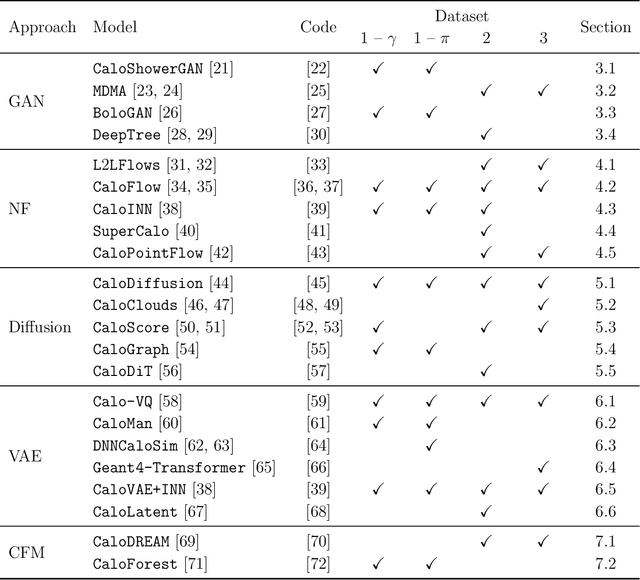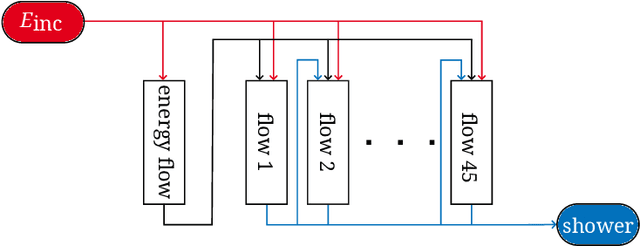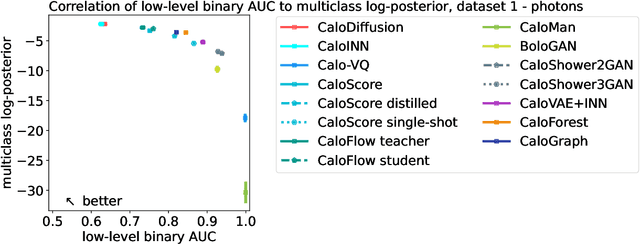Luigi Favaro
CaloChallenge 2022: A Community Challenge for Fast Calorimeter Simulation
Oct 28, 2024



Abstract:We present the results of the "Fast Calorimeter Simulation Challenge 2022" - the CaloChallenge. We study state-of-the-art generative models on four calorimeter shower datasets of increasing dimensionality, ranging from a few hundred voxels to a few tens of thousand voxels. The 31 individual submissions span a wide range of current popular generative architectures, including Variational AutoEncoders (VAEs), Generative Adversarial Networks (GANs), Normalizing Flows, Diffusion models, and models based on Conditional Flow Matching. We compare all submissions in terms of quality of generated calorimeter showers, as well as shower generation time and model size. To assess the quality we use a broad range of different metrics including differences in 1-dimensional histograms of observables, KPD/FPD scores, AUCs of binary classifiers, and the log-posterior of a multiclass classifier. The results of the CaloChallenge provide the most complete and comprehensive survey of cutting-edge approaches to calorimeter fast simulation to date. In addition, our work provides a uniquely detailed perspective on the important problem of how to evaluate generative models. As such, the results presented here should be applicable for other domains that use generative AI and require fast and faithful generation of samples in a large phase space.
Anomalies, Representations, and Self-Supervision
Jan 11, 2023Abstract:We develop a self-supervised method for density-based anomaly detection using contrastive learning, and test it using event-level anomaly data from CMS ADC2021. The AnomalyCLR technique is data-driven and uses augmentations of the background data to mimic non-Standard-Model events in a model-agnostic way. It uses a permutation-invariant Transformer Encoder architecture to map the objects measured in a collider event to the representation space, where the data augmentations define a representation space which is sensitive to potential anomalous features. An AutoEncoder trained on background representations then computes anomaly scores for a variety of signals in the representation space. With AnomalyCLR we find significant improvements on performance metrics for all signals when compared to the raw data baseline.
 Add to Chrome
Add to Chrome Add to Firefox
Add to Firefox Add to Edge
Add to Edge